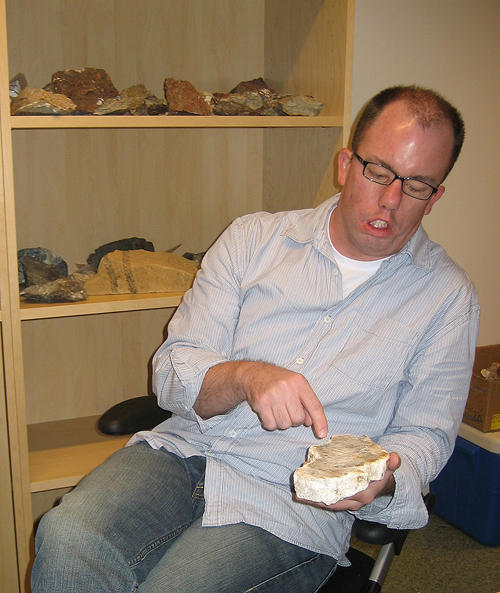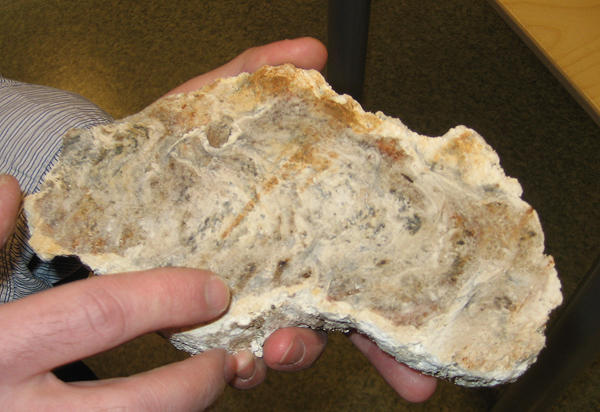Learning more about geobiology through sulphur isotopes
While many researchers are coming to CGB to gain access to both the Centre’s laboratory resources and researchers, CGB researchers are also travelling abroad to access technical resources not available at the University of Bergen.

Main content
CGB researcher Benjamin Eickmann recently spent a month at the University of Münster measuring his samples on a new mass-spectrometer (MS) that is coupled to a fluorination line. This enables it to measure all 4 stable sulphur isotopes. Geobiology researchers are particularly interested in sulphur isotope studies because the ratio between the isotopes provides information about whether a particular sample is biological or non-biological in origin – living organisms prefer to use the lighter isotopes.
The samples came from 2 sediment cores that were collected near the deep sea hydrothermal vent, Loki’s Castle. (learn more about the discovery of Loki’s Castle in 2008 by CGB researchers – and from ship’s log pages)
Initial bulk studies of the samples have been undertaken at the Swiss Federal Institute of Technology (ETH) by PhD student Tamara Baumberger. These clearly demonstrated that sulphate reduction was taking place in the sub-sea floor sediments. Researcher Andrea Jaeschke, also at ETH, undertook biomarker studies on the samples and found the same result – biogenic activity was involved in the sulphur cycling in the sediments. With the new MS at Münster Eickmann aimed to get more high-resolution information about the sulphur in the samples.
Sulphur has four stable isotopes (32S, 33S, 34S, 36S) whose percentage abundances are approximately 95.0, 0.75, 4.20, and 0.017 respectively. Eickmann explains that one needs information about all 4 isotopes to clearly determine if the material in question is of biotic or abiotic origin. He says that the relative abundances of the two rarest isotopes, 33S and 36S are especially informative: they reveal differences between different sulphur metabolisms within organisms. These differences in turn tell CGB researchers something about the biological activity on-going in these deep sea sediments.
The results thus far suggest that the sulphur material deposited in the high-temperature chimneys is primarily of abiotic origin, while that in the surrounding sediments seems to be primarily of biotic origin.
By combining multi-disciplinary and complementary approaches and using special state-of-the-art equipment and techniques CGB researchers are building up a more complete picture of the geo-biological system around Loki’s Castle.

